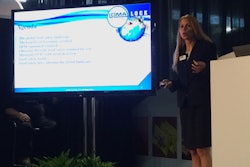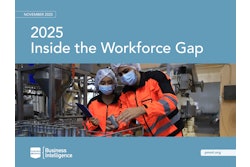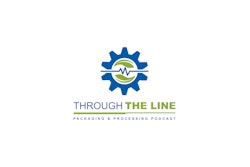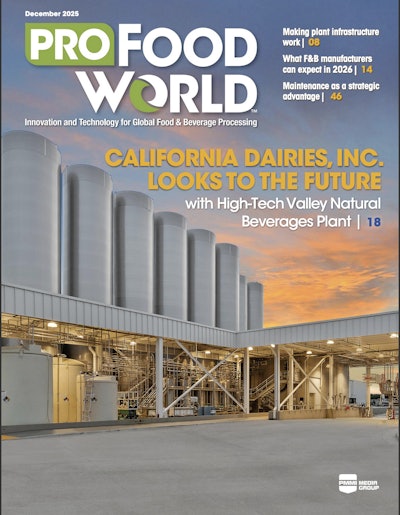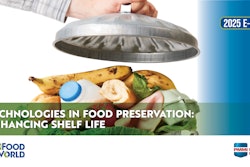Keith Chambers was sitting atop a three-story tank in an Australian ice cream factory attempting to cap the end of a pipe when he became aware of something very wrong. The pipe had started vibrating like a track set humming by an oncoming train. The vibration could mean only one thing. In a matter of seconds, Chambers realized, gallons of hot, caustic chemi- cals would blast out at him—unless he tightened the bolts on the cap in a hurry. Fortunately, he finished just in time.
Chambers—who today serves as director of operations and execution systems at Schneider Electric (Schneider Electric, http://www.schneider-electric.com)—tells this story from his days as an independent systems integrator to illustrate the importance of coordinating clean-in-place (CIP) procedures at food, beverage and pharmaceutical plants. What caused Chambers to be put in danger that day is that someone in the next room at the ice cream plant had chosen the wrong moment to start cleaning operations, not realizing that Chambers was in harm’s way. “None of the cleaning activities that were going on were really being coordinated,” he says now.
Getting plant workers on the same page is one of the reasons automation is playing a greater role in industrial cleaning and washdown procedures. Chambers points to Schneider Electric’s Wonderware Workflow software as an example of an application that can coordinate the activities of plant workers and alert them immediately of any problems, wherever they may occur.
Tightening standards
It’s not just plant operators who see the need for more effective cleaning procedures. In 2011, President Obama signed into law the biggest overhaul of American food safety laws since the 1930s. The Food Safety Modernization Act (FSMA) directs the Food and Drug Administration (FDA) to issue new regulations designed to shift the agency’s focus from responding to food safety problems to preventing them.
Jennifer McEntire, chief science officer at the Acheson Group (The Acheson Group, LLC (TAG), http://achesongroup.com), a food and beverage industry consultancy, says that the rules with the biggest impact on food and beverage manufacturing will be those that deal with plant sanitation to prevent food safety problems. “Specifically,” she says, “sanitation of product contact surfaces. The conveyors that products are running on, the tools and utensils that are used to handle products—the things that are actually touching product where contamination could very reasonably occur.”
Although the new rules won’t be finalized until Aug. 30, 2015 at the earliest, McEntire and her colleagues recommend that manufacturers start reviewing published draft rules for guidance. “We know that FDA is, in response to public comments, reevaluating some sections, but I don’t expect dramatic changes around sanitation,” she says.
Music of the spheres
As the new FDA requirements demonstrate, keeping surfaces clean in a plant that processes products for human consumption is now more important than ever. That goes for the build of individual components as well as the production line as a whole.
As McEntire points out, “FDA is taking a step further now in looking at how these pieces of equipment could result in contamination of product.” She says that for some product types a key requirement could be for testing equipment on a regular basis to ensure that “there aren’t sites that are very difficult to clean—where the microbes can find a nice cozy little home and grow and track their way around the plant and get into the product.”
Building a clean production line starts with sourcing components designed to resist pathogens. Tom England, vice president of market development at motion control supplier Kollmorgen, points to new motors made by his company as being particularly easy to keep clean.
“We went through the thought process of, ‘What is the most hygienic geometry that we can come up with for a servo motor?’ And we said, ‘Well, that’s a sphere,’” England says. Spheres have no hidden crevices in which microbes can hide and they’re easy to clean. “The only problem,” he says, “was you couldn’t get very much speed and torque out of a sphere.”
However, starting with the sphere as the ideal geometry, Kollmorgen engineers came up with a cleaner design, which they dubbed the AKMH series of servomotors, where the “H” stands for “hygienic.” Although the motors themselves are not spherical, the concept is applied to the AKMH’s rounded housing.
The housing is of 316 grade corrosion-resistant stainless steel, has no external hardware such as bolts that can harbor pathogens, and has only one cable leading into the housing for power and the venting needed to equalize pressure between the inside and the outside of the housing.
The AKMH is designed to be replaced at the end of its life rather than serviced so that it doesn’t have to be opened up. The motors are also designed to be completely immersed in cleaning agents with a pH range of 2-12 during daily or weekly washdown procedures. The company’s expertise in developing underwater thrusters and other marine systems came in handy during the design of this new motor series, says England.
As for the torque and horsepower issues with the rounded housing, England says the AKMH motors operate at about 5 percent less torque than similar- size AKM motors, due to the cylindrical shape and stainless steel construction. It's a bit of a trade-off in performance to get a more hygienic motor, but not a significant amount, he adds.
Holistic control
One of the benefits that automation can bring to production washdown procedures is precise control over the process throughout a manufacturing plant.
Chambers emphasizes the importance of overarching applications (such as the Wonderware InBatch software that Schneider Electric supplies) because of their ability to manage all aspects of a CIP system—including water temperatures, chemical mixes and rinsing times throughout a production line. Equally importantly, the system can coordinate all CIP operations and perform them exactly the same way every time.
Such a system would have saved Chambers a few gray hairs as he went about his work in the Australian ice cream plant, by keeping everyone in the plant on the same page about where and when each CIP operation was to take place. Centralized control systems also give operators the flexibility they need to adapt to changing regulatory requirements and product recipes, and can help them scale up to meet increasing product demand, since they can easily accommodate additional equipment.
To help ensure compliance with hygiene requirements, Rockwell Automation’s (Rockwell Automation, http://www.rockwellautomation.com) PlantPAx Process Automation System offers server-based control that can make some tasks dependent on others, such as key pieces of equipment getting cleaned before product ingredients can run through them. “When you talk about cleaning being a necessary step,” explains Kristopher Dornan, Rockwell Automation’s product integration manager, “having those requirements in place...helps prevent any human error.”
Of course, even the best control software and human-machine interfaces (HMIs) won’t do much good if all of the equipment in a plant can’t connect to those systems. To address this, Miguel Mercedes, strategic industry manager at Omron Automation & Safety (OMRON Global, http://www.omron.com/), stresses the importance of modularity, particularly in plants with multiple production lines.
“You want to make sure that what you do on one line, you can do on other lines,” Mercedes says. “One of the things you want in your automation platform is the ability to move machines easily from one production line to the next.” Machines that are compatible with the same control systems and understand the same programming language give plant operators the flexibility they need to easily reconfigure automation systems.”
Once a production line and its control system are in place, CIP operations can be run like any batch process used to make and package products. A white- paper published by Schneider Electric outlines four main variables—called the “4 Ts”—that should be properly managed for an optimized CIP process. These variables are: the Time that it takes for a cleaning process to run; the Temperature at which each ingredient of the cleaning process is kept; the Titer, or concentration of cleaning agents; and the Turbulence, or speed at which water and chemicals impact surfaces to be cleaned.
With a good control system in place, these variables can be fine-tuned to fit individual pieces of equipment to be cleaned and adjusted for maximum effectiveness and efficiency. Schneider Electric estimates that effective CIP automation at a typical food processing plant can save operators up to 20 percent in energy costs and also reduce by 20 percent the productivity lost while cleaning takes place.
The new FDA regulations will require more extensive documentation of cleaning operations. “You’ve got to do it, and you’ve got to document it,” says McEntire. Before FSMA, she says, “The documentation requirements for FDA were not really there.”
It’s all in service of tracking potentially contaminated food through the supply chain if necessary and, here again, automation can help. Good control systems keep a record of all of the ingredients used in a given production line as well as each step of each cleaning process. In addition, the waste generated in cleaning procedures—for example, the amount of a given chemical that goes down a given drain—can be automatically tracked and documented electronically. This not only allows plant operators to verify the effectiveness of a cleaning operation, but also provides good documentation for any regulatory audits that might occur.
Finally, once updated systems and properly documented procedures are in place, it’s important to follow them correctly. Kollmorgen’s (Kollmorgen, http://www.kollmorgen.com) England describes the scene of a washdown at a snack food processing plant that had his colleagues scrambling to design more robust hardware.
“The first thing that they did when they came in is they put bags over top of the servomotors,” England recalls. The idea was to protect the equipment from the washdown and prevent malfunctions. But that meant that the equipment was not adequately cleaned.
Bagging equipment for washdowns has been standard operating procedure for many plant operators, England says, but newer equipment that is designed to stand up to washdowns doesn’t require it. Eliminating that step not only makes washdowns more effective, but it shaves downtime as well. It’s up to plant operators, however, to know whether their equipment can survive washdowns without protection.
And, of course, they also need to make sure that no one is sitting on top of any tanks before starting a CIP operation.






